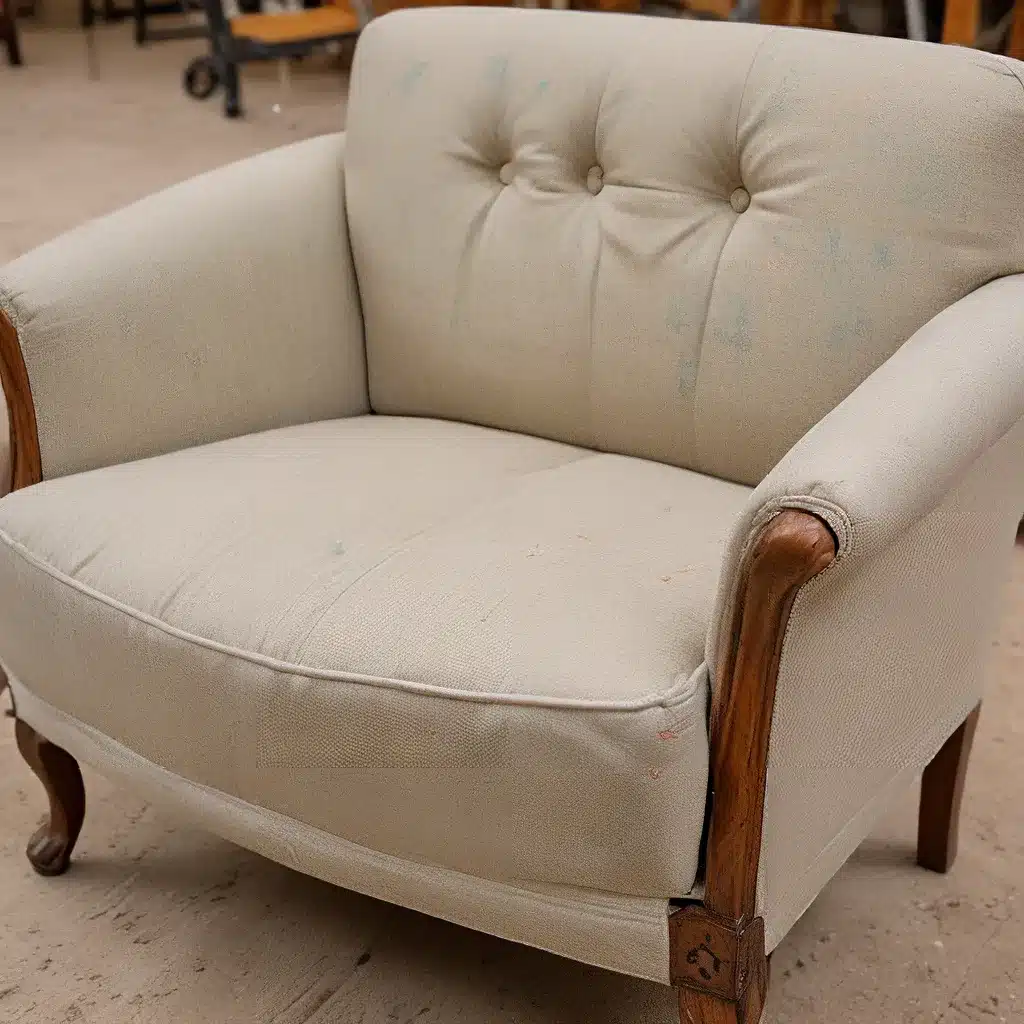
Breathe New Life Into Your Faded Furniture
As I sit here surrounded by my well-loved, but undeniably worn furniture, I can’t help but feel a twinge of nostalgia. These pieces have been with me through thick and thin, weathering the storms of everyday life. But let’s face it, they’ve seen better days. The once vibrant fabrics have faded, and the once-plush cushions have lost their luster.
It’s easy to feel tempted to just toss it all and start fresh. But hold on – what if I told you that with a little elbow grease and some creative flair, you could transform those tired, old pieces into something truly stunning? That’s right, my friends, we’re about to embark on a journey of DIY upholstery restoration.
Uncovering the Secrets of Upholstery Revitalization
I’ll admit, the thought of tackling upholstery work can be a bit daunting. But trust me, it’s not as complicated as it seems. With the right tools, a little patience, and a willingness to get your hands dirty, you can breathe new life into those well-worn furniture pieces.
Let’s start with the basics. First and foremost, you’ll need to assess the condition of your upholstery. Is it just faded and a bit worn, or are there bigger issues like tears or missing padding? This will help you determine the best course of action. If it’s just a matter of fading, a simple reupholstering job might be all you need. But if there are more significant structural problems, you may need to dive deeper into the restoration process.
Experts recommend starting with a thorough cleaning. Use a gentle, mild soap and warm water to gently scrub away any dirt or grime that’s accumulated over the years. Be careful not to soak the fabric too much, as this can cause damage. Once it’s clean, let it air dry completely before moving on to the next step.
Sanding and Staining: A Furniture Facelift
Now, if your upholstery is really looking worse for wear, it might be time to consider a more dramatic transformation. That’s where sanding and staining come into play. This is especially useful for wooden frames or exposed areas of your furniture.
Start by giving the wood a good sanding. This will help remove any old, chipped or peeling finishes, and prepare the surface for a fresh new stain. Be sure to use a fine-grit sandpaper and sand in the direction of the wood grain to avoid any unsightly scratches or gouges.
Once you’ve achieved a smooth, even surface, it’s time to pick out a new stain color. This is where the fun really begins! Experiment with different shades and finishes to see what best complements your existing decor. A rich, dark mahogany might add a touch of elegance, while a light, airy whitewash could give your pieces a more modern, farmhouse-inspired look.
Mastering the Art of Upholstery
Alright, now for the main event – reupholstering those tired old cushions and seats. This is where your DIY skills will really be put to the test, but don’t worry, I’ve got your back.
First, you’ll need to carefully remove the old fabric. Take your time and document the process as you go – this will make it much easier to put everything back together later.
Next, use the old fabric as a pattern to cut your new upholstery material. Be sure to leave a little extra room around the edges to account for wrapping and stapling.
Now comes the fun part – putting it all back together. Start by carefully stretching and stapling the fabric onto the frame, making sure to smooth out any wrinkles or bunches as you go. Pay close attention to the corners and edges, as this is where things can get a bit tricky.
Once the main body is covered, it’s time to tackle the cushions. Stuff them with new, high-quality foam to restore that plush, supportive feel. Then, carefully wrap the fabric around the cushions and secure it in place with more staples.
The Finishing Touches
Congratulations, you’ve made it this far! Now it’s time to put the final touches on your masterpiece. Step back and admire your handiwork – those tired, old pieces should be looking brand new!
If there are any exposed frames or legs, consider giving them a fresh coat of paint or stain to really tie the whole look together. And don’t forget to fluff and fluff and fluff those newly upholstered cushions until they’re practically begging you to sink into them.
So, what are you waiting for? Grab your tools, put on your can-do attitude, and let’s get to work transforming those worn-out pieces into showroom-worthy furniture. Who knows, you might even surprise yourself with your newfound upholstery prowess.
And hey, if you’re ever in need of professional carpet cleaning services, be sure to check out Carpet Cleaning Maconga. They’ve got you covered for all your cleaning needs, from carpets to upholstery and beyond.

